After spending several weeks in Peru’s dry and dusty coastal desert, Gregor and I were totally ready for a change of scenery. Up to this point, we hadn’t yet seen any of the majestic Incan ruins or fluffy llamas or traditionally dressed Peruvian natives that I had expected to see at every corner. If I’d actually done my geography homework, I would have realized that all that good stuff can be found in the country’s higher-altitude regions to the east. So we left the sand and sea behind and ascended the winding roads to Cusco, the former capital of the Incan Empire.
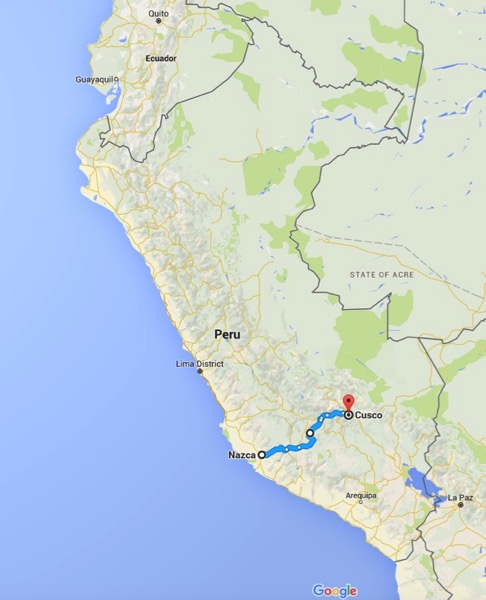
We drove 655 km from Nazca to Cusco in 2 days, climbing from 520 m to 3400 m.
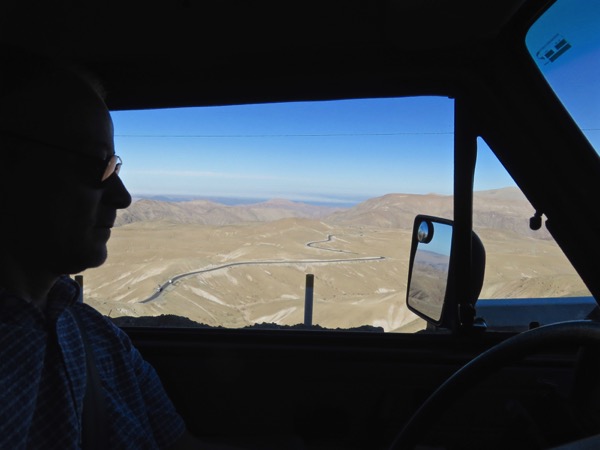
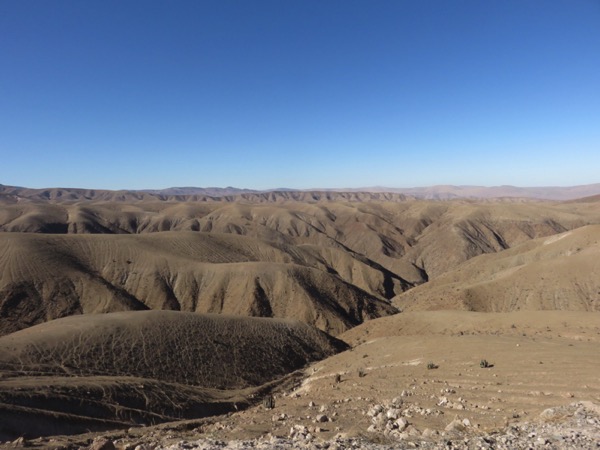

The vicuna, a camelid from the same family as the llama and alpaca.
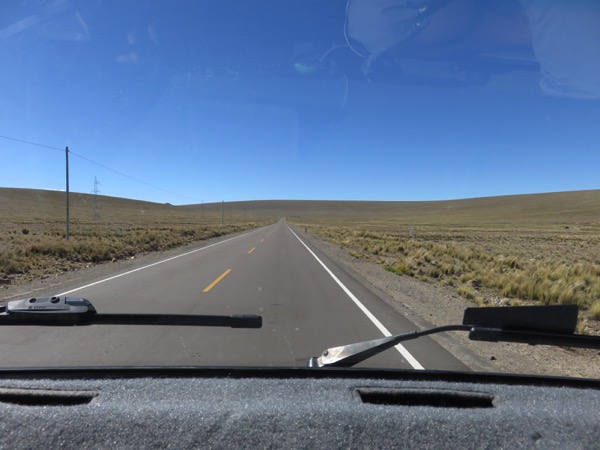
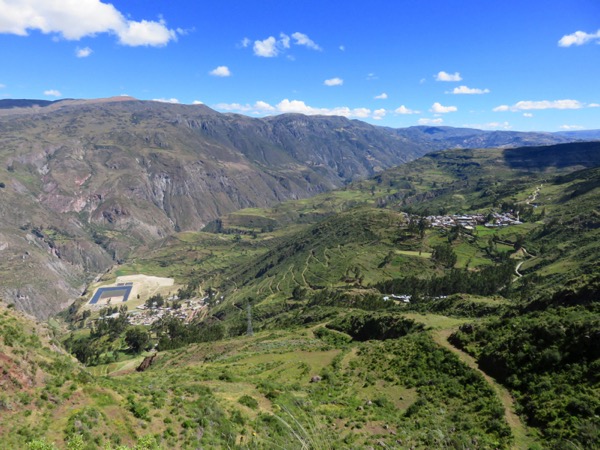
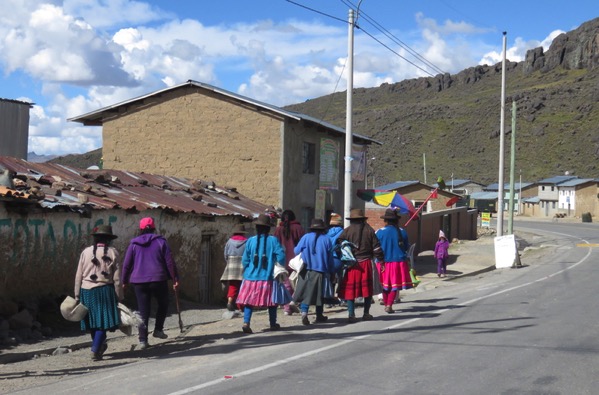
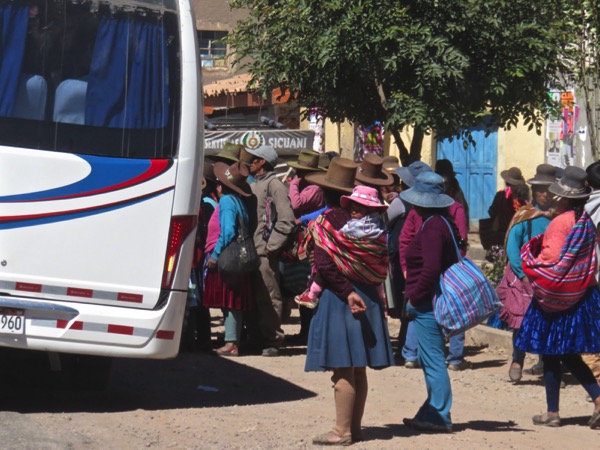
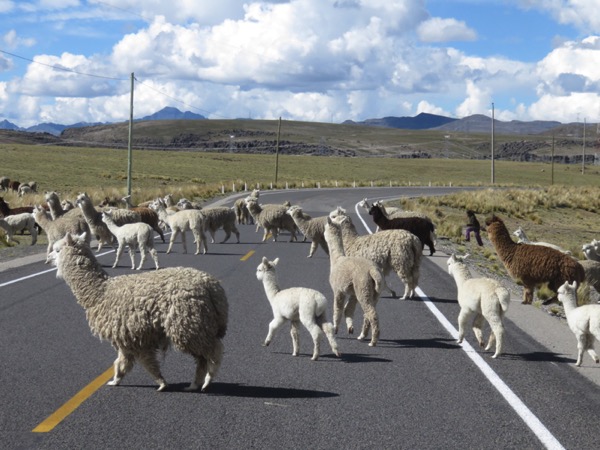
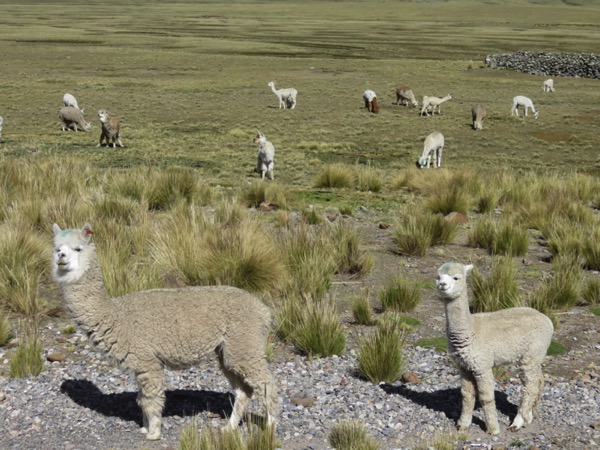
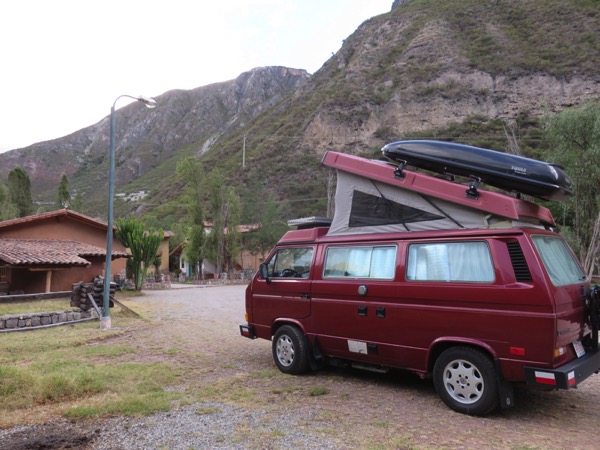
Our campsite in Tampamayu, halfway between Nazca and Cusco
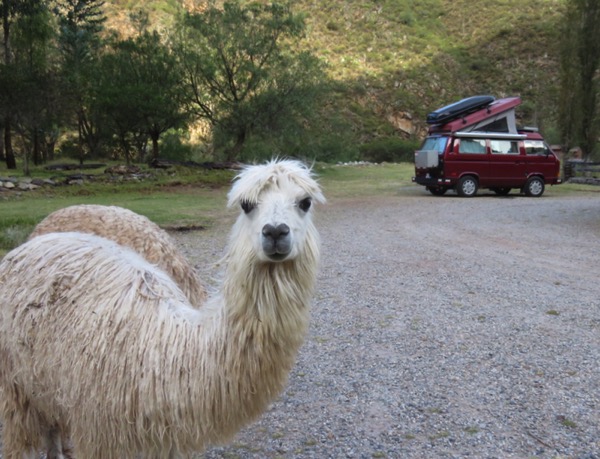
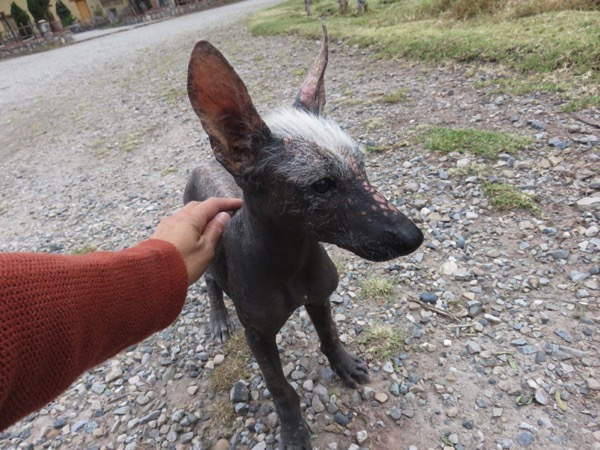
Peruvian hairless puppy
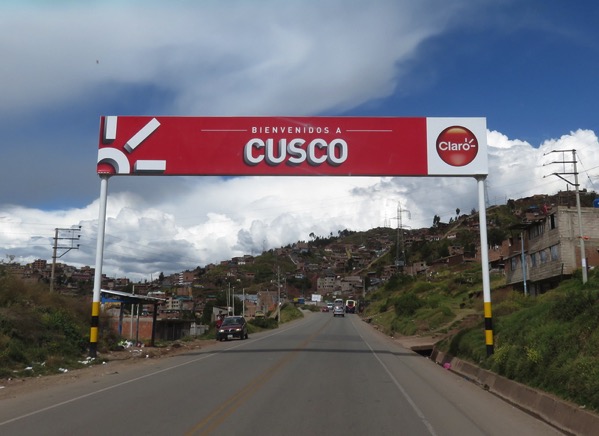
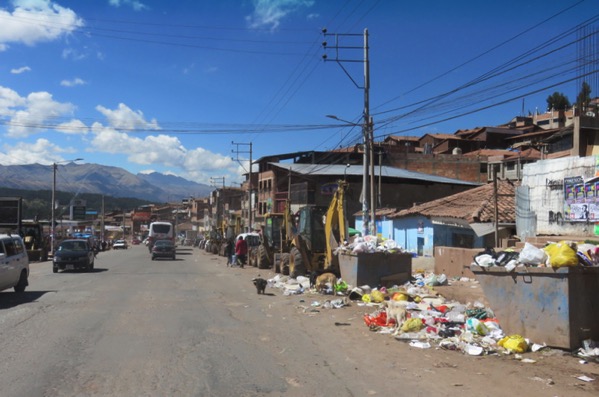
Can’t get away from the garbage!
In Cusco, we camped at Quinta Lala campground – the only formal campground within city limits. Quinta Lala is a 20-minute walk to Cusco’s historical district and it’s a convenient launching point for exploring the region’s impressive Incan ruins. As a result, it’s a popular place for overlanders to park their rigs.
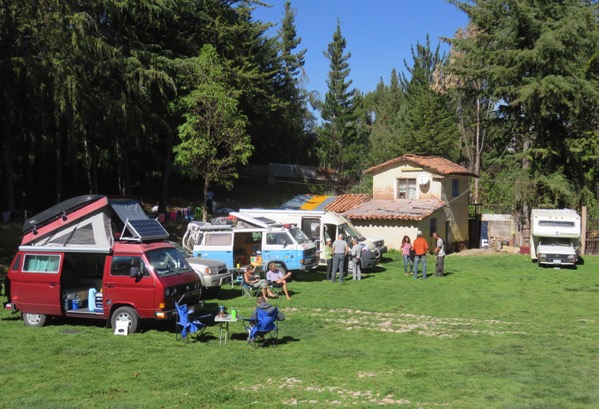

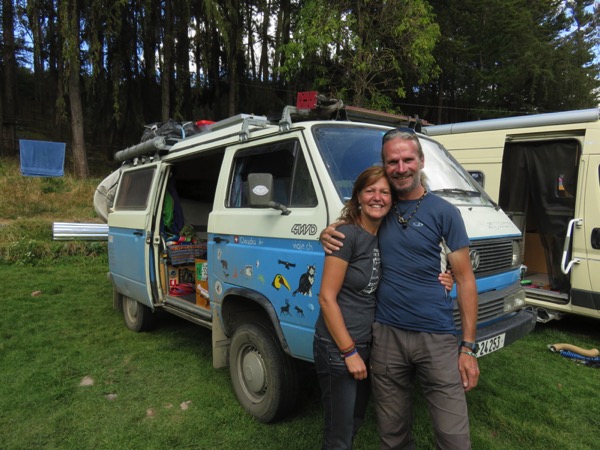
Martin and Claudia from Switzerland. We first met them in Mexico and met them again over one year later at Quinta Lala.

Ben from New Mexico, USA, and his Mexican dog, Lorenzo
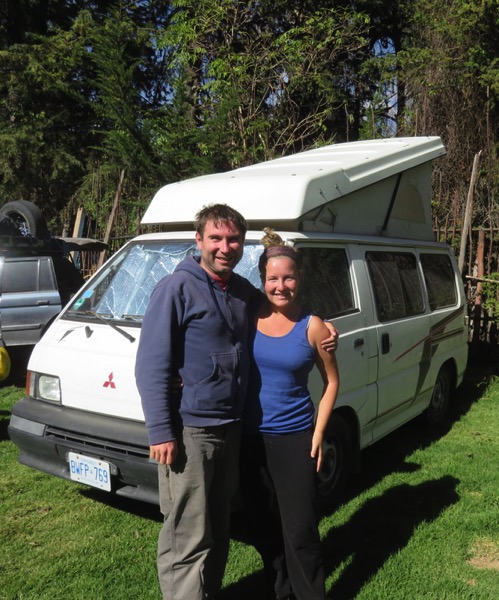
Philipp and Tanya from Ontario, Canada
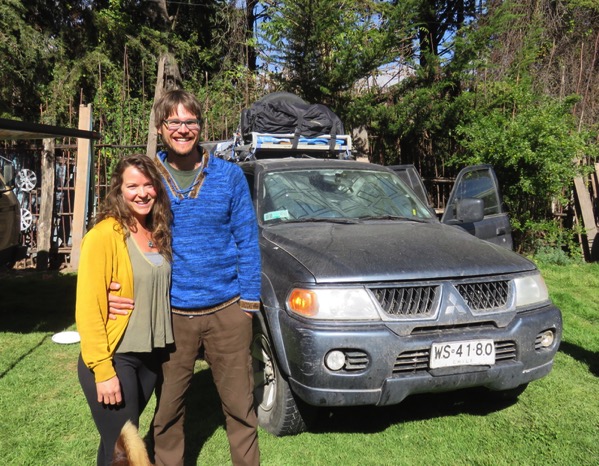
Jeanne and Aaron from Idaho, USA
The mornings at Quinta Lala campground were always freezing cold, but as soon as the sun came out it felt downright tropical.
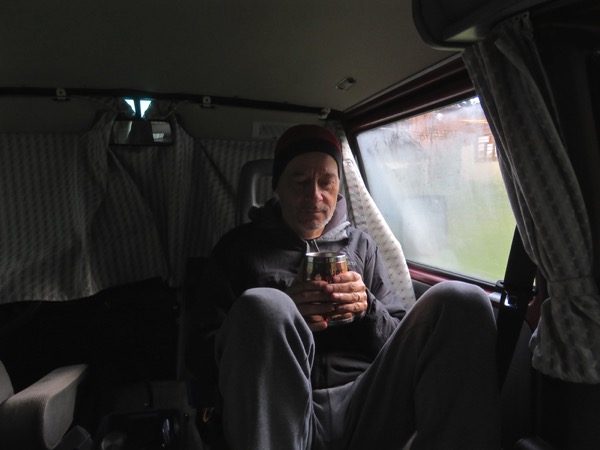
Keeping warm with an early morning coffee

By 10 am, we had ideal conditions for solar power
On Gregor’s days off, we explored Cusco’s city centre, a UNESCO World Heritage Site. Over 2 million visitors come to Cusco each year to explore the region’s museums, colonial architecture, and archeological sites.

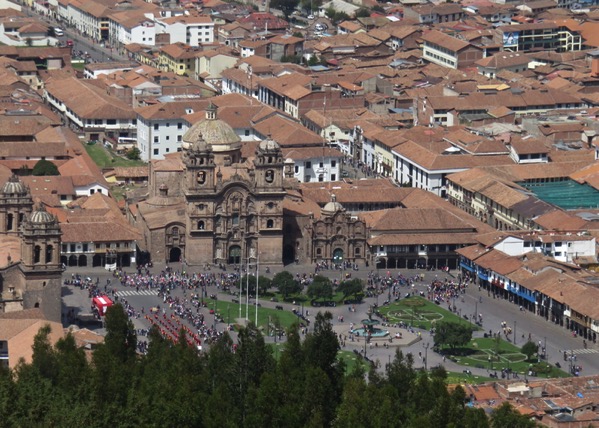
Plaza de Armas in Cusco
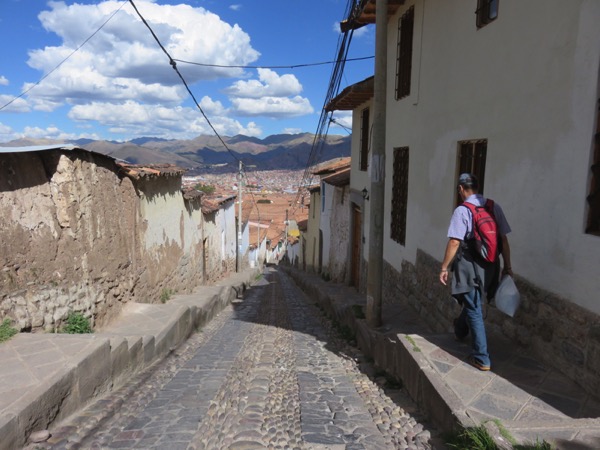
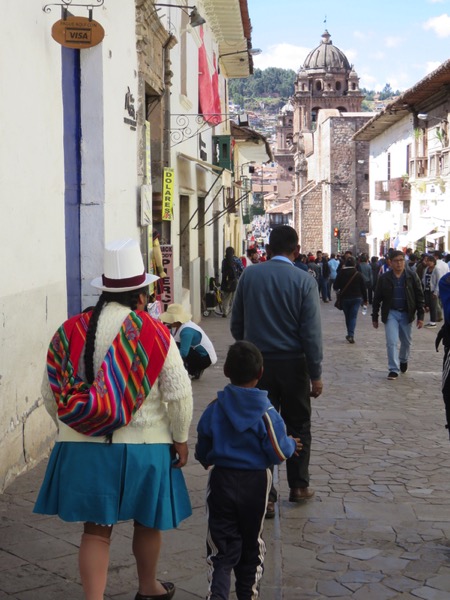
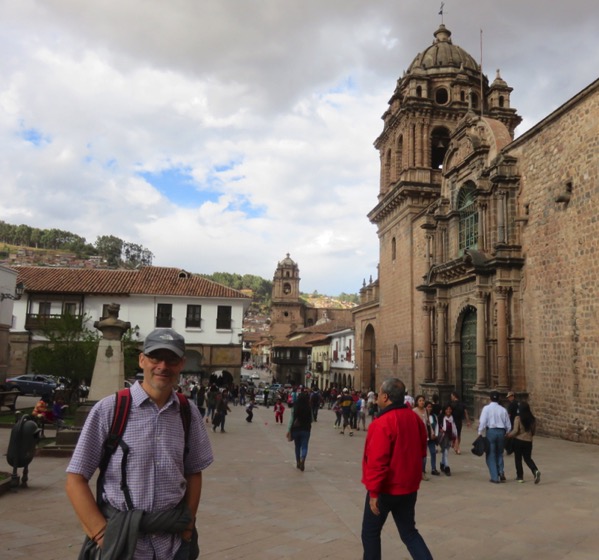
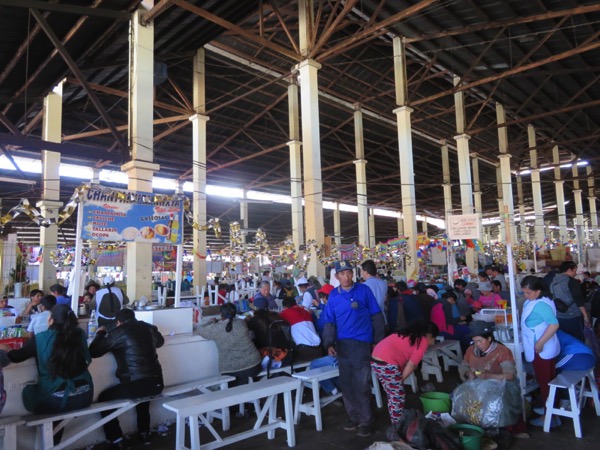
The cheap eateries in Cusco’s Central Market
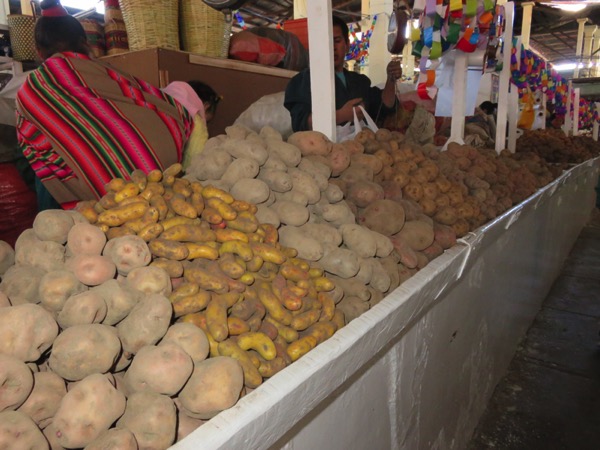
More than 4,000 varieties of native potato grow in the Andean highlands of Peru
The city centre is rather clean and has a relaxed “international” feel, but it was also very touristy – tons of tour operators, fancy hotels, budget hostels, and expensive restaurants and pubs, along with a dizzying array of alpaca sweater boutiques, souvenir stores, and shops selling camping gear and warm technical clothing.
There were also lots of adorable little girls dressed in traditionally woven dresses and colourful hats holding little white lambs walking on the sidewalks. They are so darn cute and charming that you can’t help but pull out your camera to take a photo. But as soon as they see you with your camera, they run to you and tell you how much it will cost you to take their picture. If you decide to put your camera away at that moment, they follow you until you either give in, or you get so irritated that you wish you had never seen their cute little faces. I didn’t pay to take their photo. Instead, I used the money to buy a coffee.
Here’s a photo of my cute little cup of coffee:
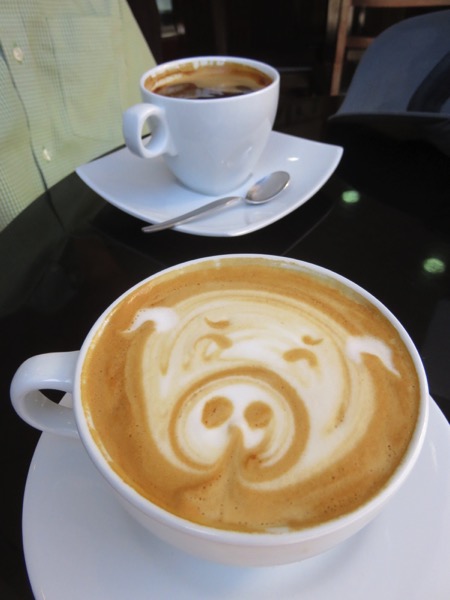
From Cusco, we explored the cultural and archeological sites in the Sacred Valley of the Incas (also known as the Urubamba Valley).
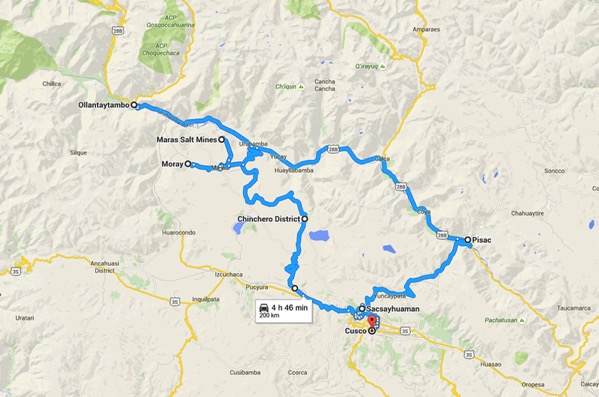
The Peruvian Ministry of Tourism sells a Boleto Turistico (Tourist Ticket), which allows admission to 16 attractions throughout the Sacred Valley but does not include guided tours nor entry to the famous Machu Picchu. The ticket cost for foreigners is about $50 CAD/$38 USD. Here’s the catch: the ticket is only valid for 10 days. Clearly, this was designed for people who fly to Peru for their two-week vacation and then go home with photos of adorable girls in traditionally woven dresses holding little white lambs.
By our calculations, we only had to visit 5 tourist attractions in 10 days to break even on the Boleto Turistico. We bought the ticket, feeling pretty chuffed about scoring a good deal…and then we remembered that Gregor had to work for 2 days so we actually only had 8 days to use the ticket. We ended up zooming around the valley ticking off the major sites on our boleto like we were contestants in the Amazing Race. Suddenly, Gregor and I were just like those people who just parachuted into Peru on their whirlwind vacation, snapping photos along the way for posterity.
Behold, our photos of the Sacred Valley of the Incas…
Sacsayhuaman
Right next-door to Quinta Lala campground is an Incan fortress made of huge geometric stones called Sacsayhuaman (pronounced “sexy woman” by us gringos). We were blown away by how each stone was carved precisely to create walls that were both impenetrable and highly aesthetic.
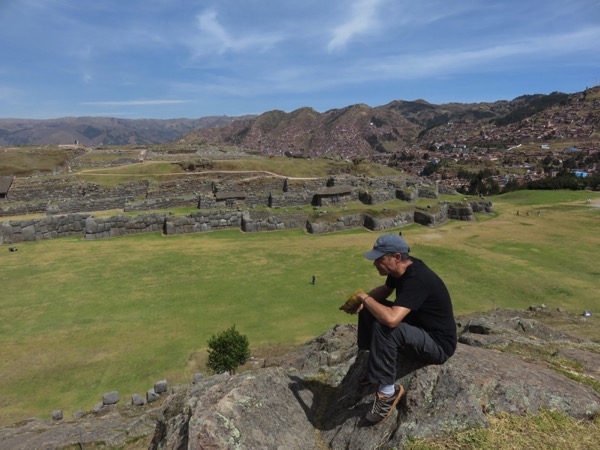
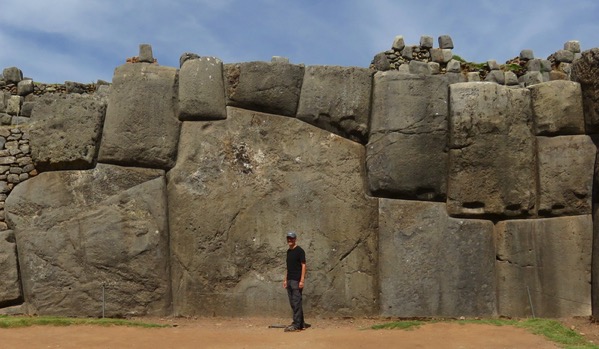
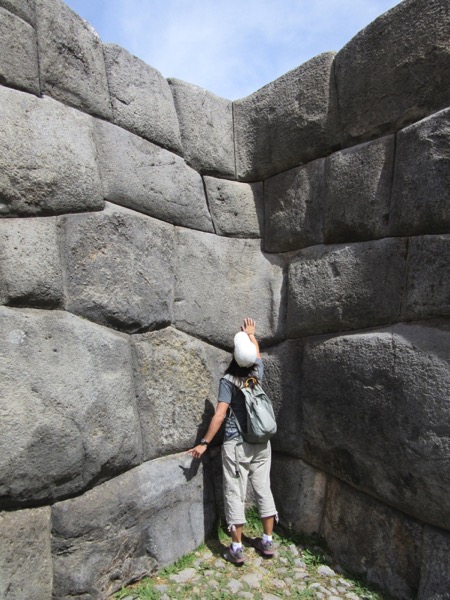
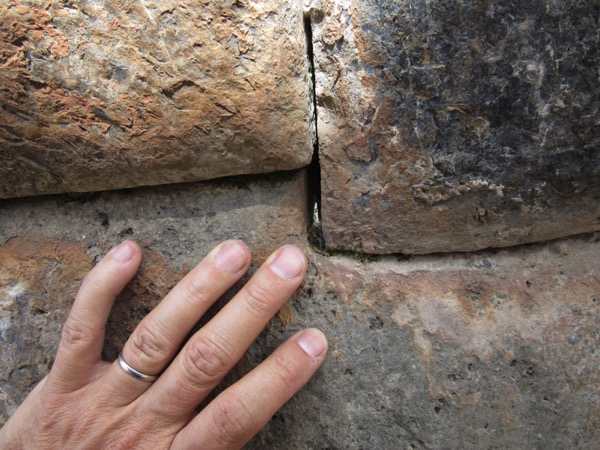

Some of the walls in Cusco mimicked the ruins of Sacsayhuaman.
Chinchero
The town of Chinchero has some modest Incan ruins, but it’s also known for its naturally dyed textiles and intricate weaving patterns. We visited a weaving cooperative called Kantu, where we were offered coca tea and snacks while we browsed their outdoor textile shop.
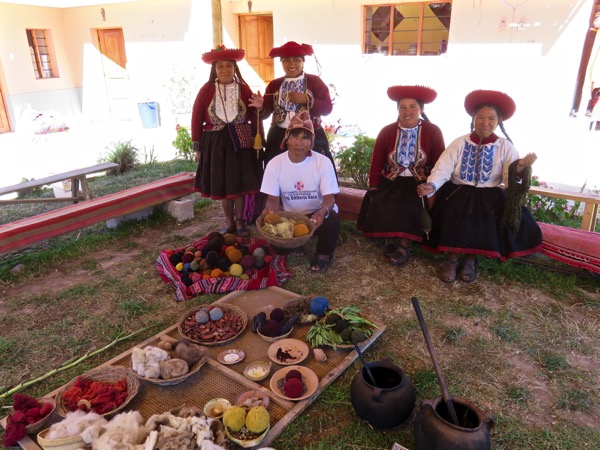
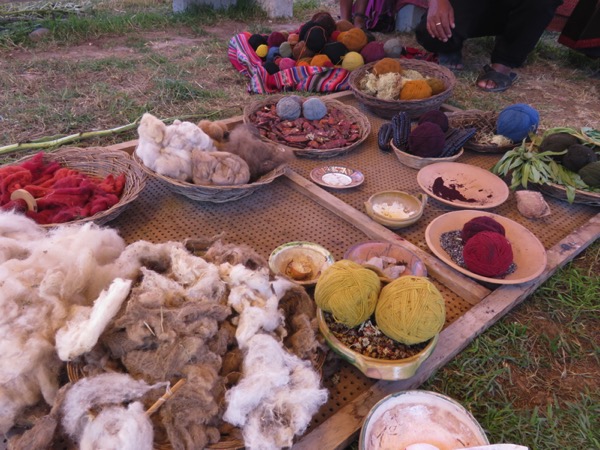
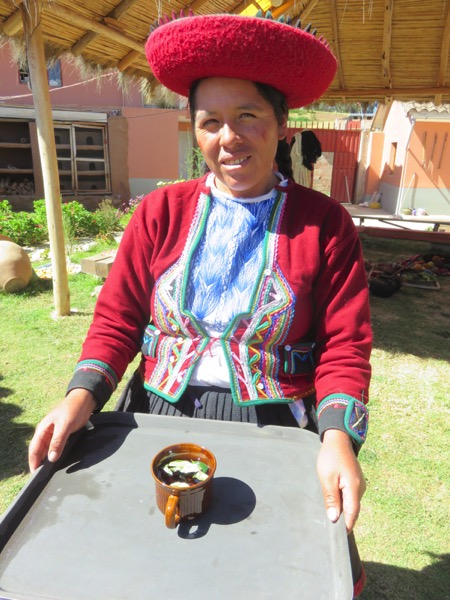
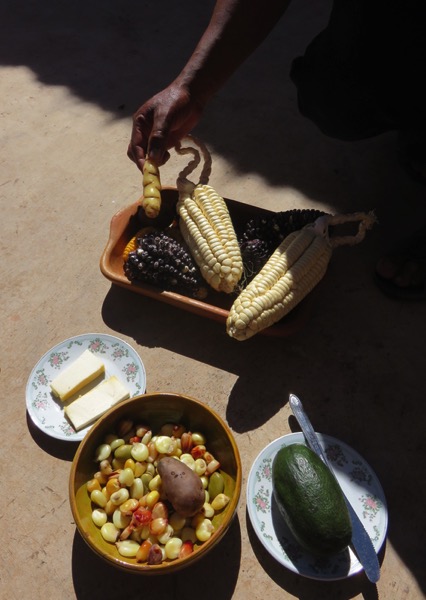
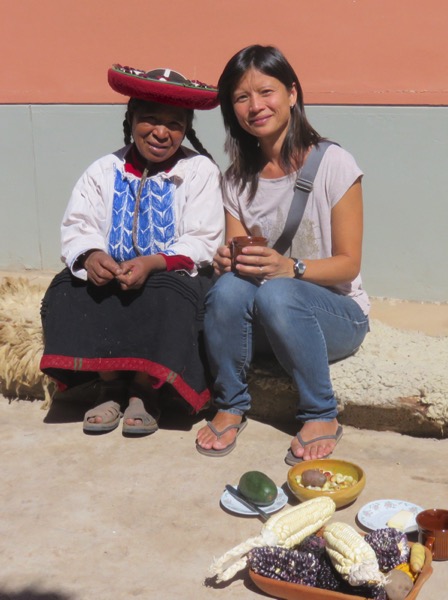
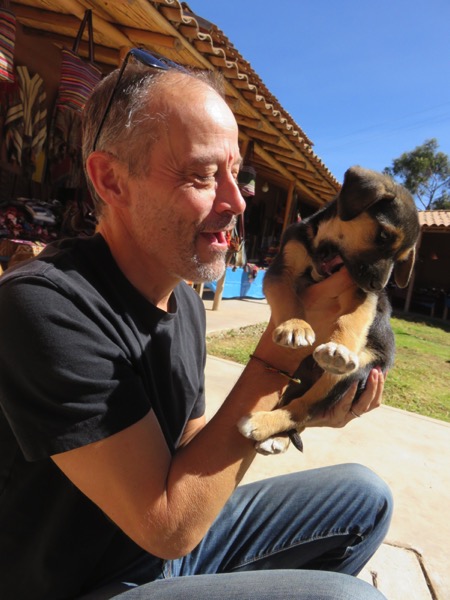
Gregor wanted to steal their dog, Solitario, and take it with us to Argentina
Salineras Salt Mines
The Salineras salt mines in Maras are a remarkable engineering feat. Pre-Incan peoples created these terraces by evaporating salty water from a local subterranean stream. The water flows into hundreds of ponds through an intricate system of channels and is carefully monitored by each pond keeper to ensure that salt precipates and dries properly before it is harvested. To this day, the salt evaporation ponds are farmed by the local community.
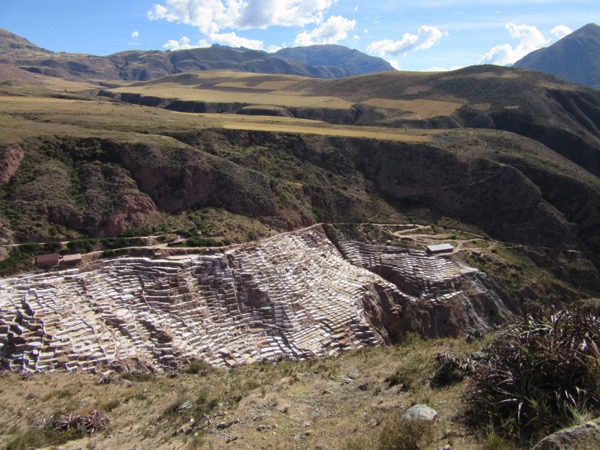
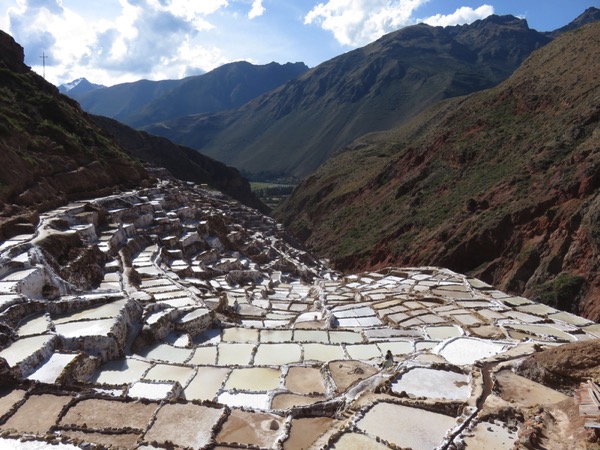
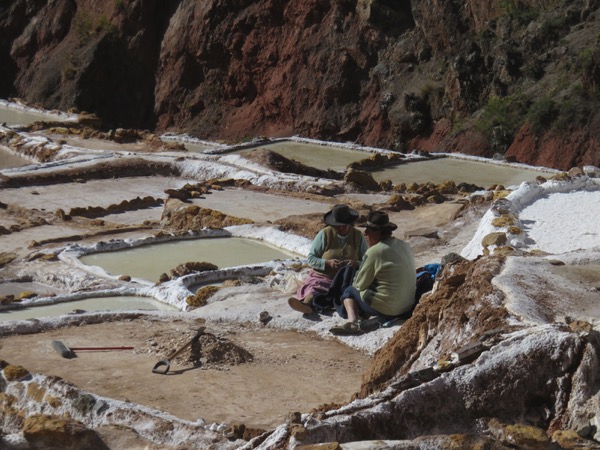
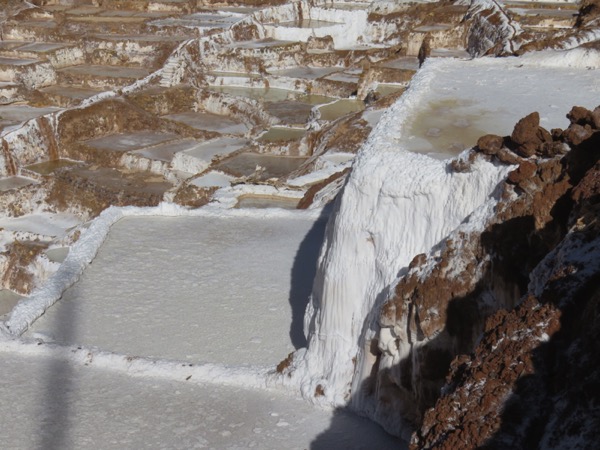
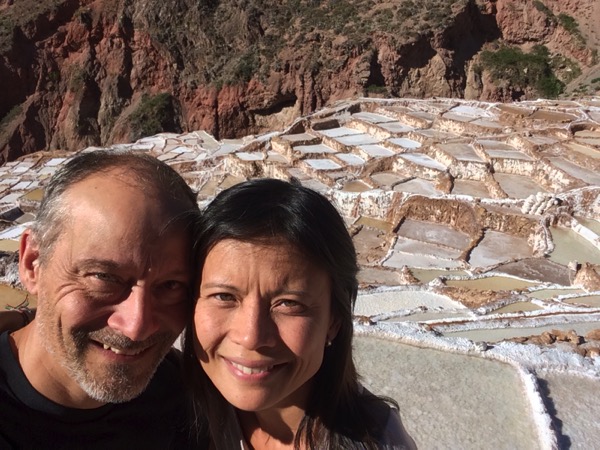
Moray
There is a temperature difference of about 15 deg C between the top and bottom of the terraces at Moray archeological site. It is thought that the Inca built the terraces to study the effects of different climatic conditions on crops. Gregor thinks they were created by aliens from another galaxy.
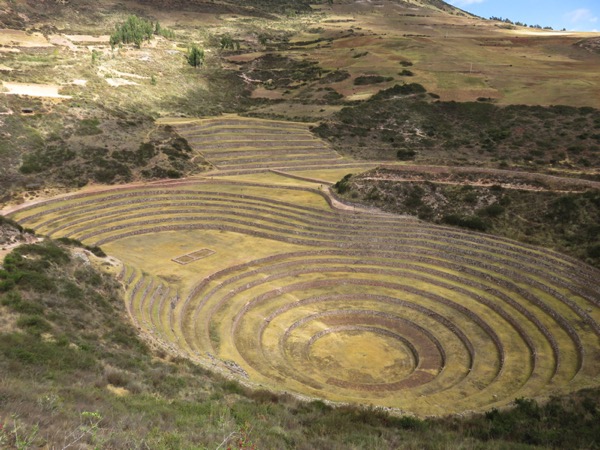
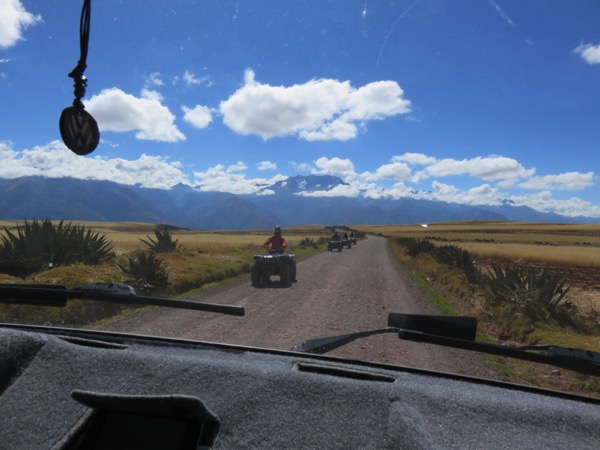
You can go to Moray on quads if you like…
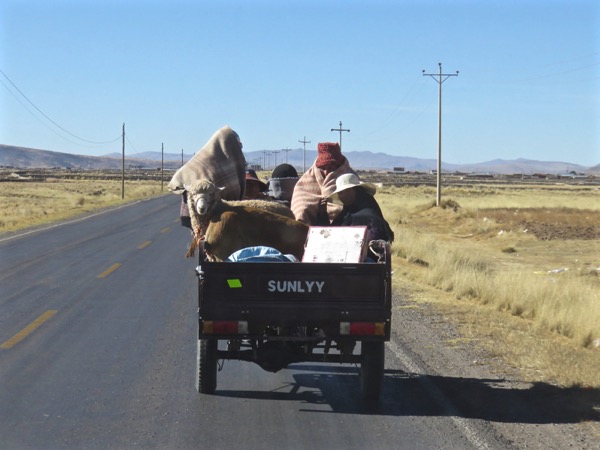
…or you can take the local public transit vehicles.

We drove there in the van.
Pisac
The Pisac ruins are perched on a hill overlooking the present-day town of Pisac, which straddles the Willkanuta River. The ruins contain military, religious, and agricultural structures which are thought to have been built to defend the southern entrance of the Sacred Valley.
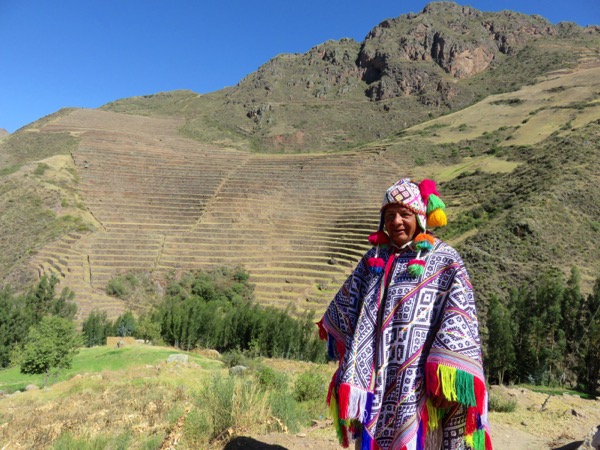

The agricultural terraces are still being used today.
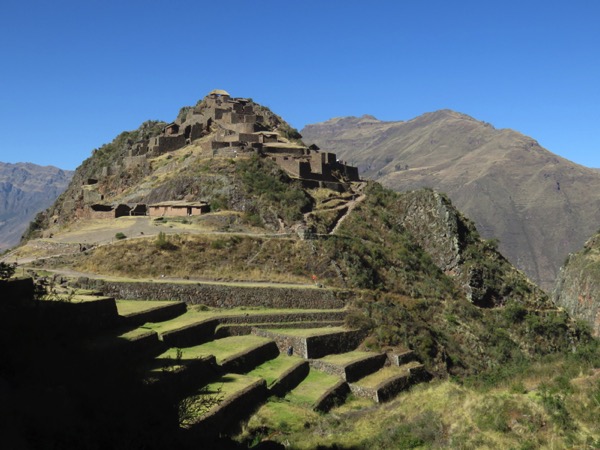
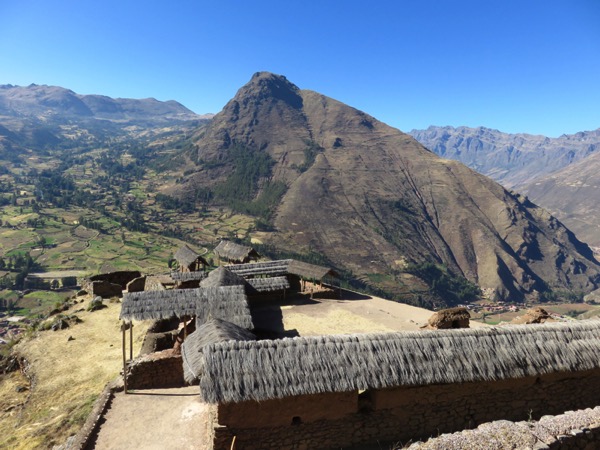
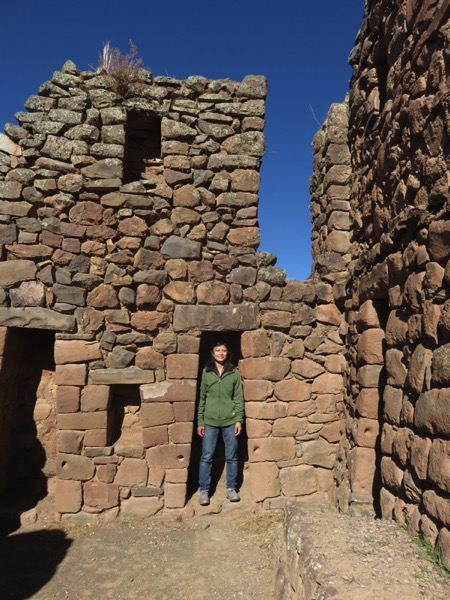
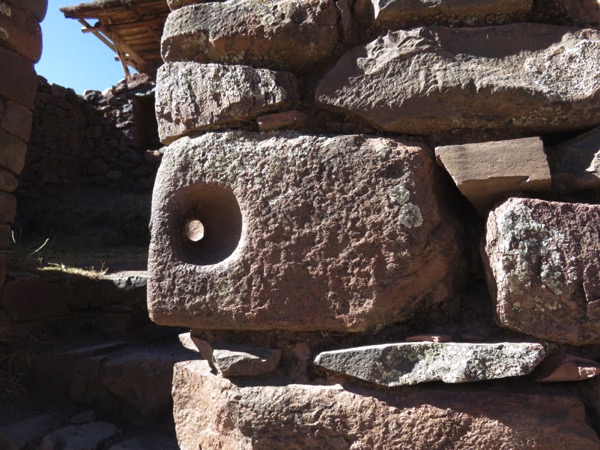

Always textile and craft vendors outside the archeological sites
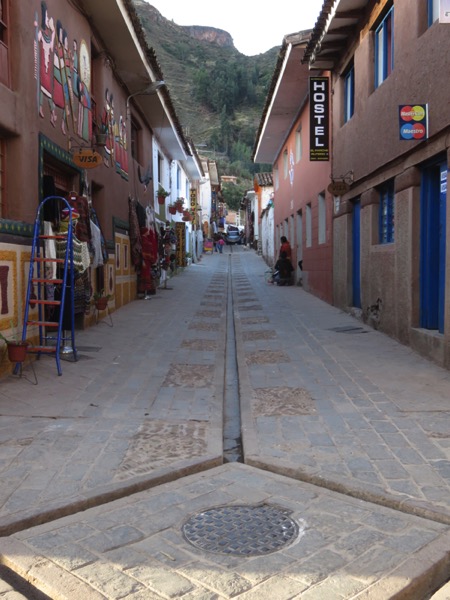
The town of Pisac has irrigation channels in the middle of the street.
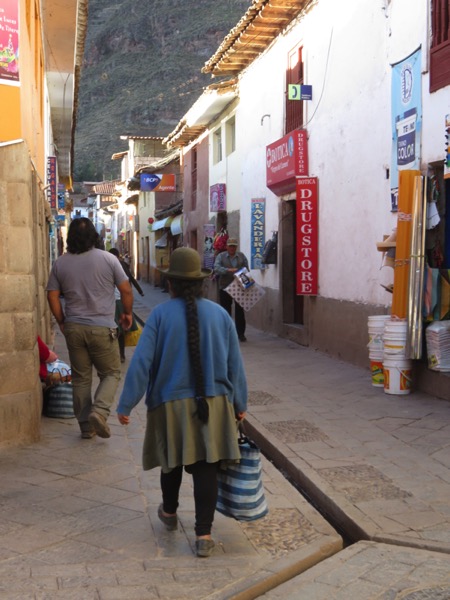
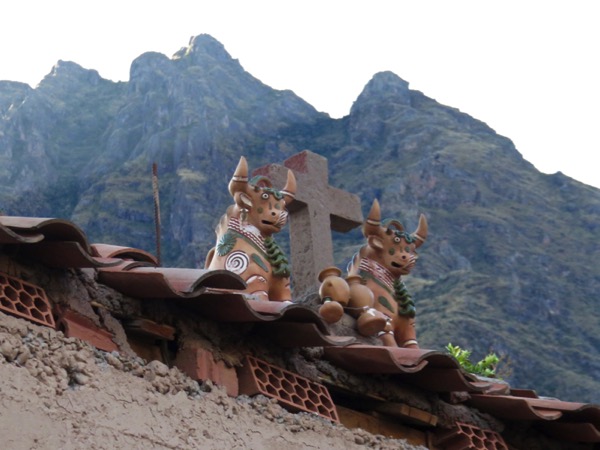
The bulls on people’s roofs ward off evil spirits.
Ollantaytambo
The ancient Incan ruins of Ollantaytambo sits at the northern end of the Sacred Valley and is located within the present-day town of Ollantaytambo, which is a charming destination in itself. The archeological site contains sacred temples, farming terraces, irrigation facilities, quarries, and military outposts – each one an engineering marvel. The town itself is made up of quaint and narrow cobble-stone streets lined with artesenal craft vendors and traditionally dressed Quechua locals. This was our favourite town of all the ones we visited in the Sacred Valley.
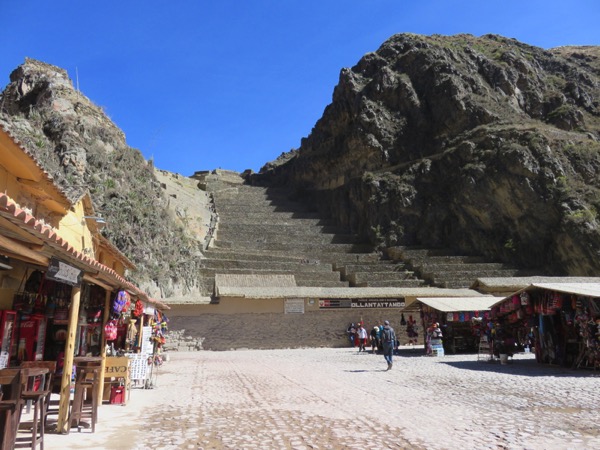
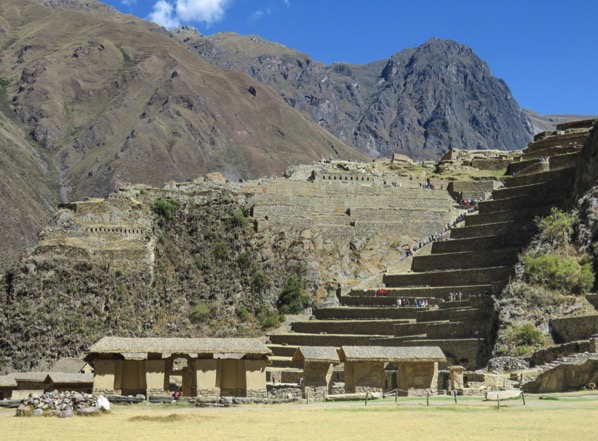

View from the terraces above
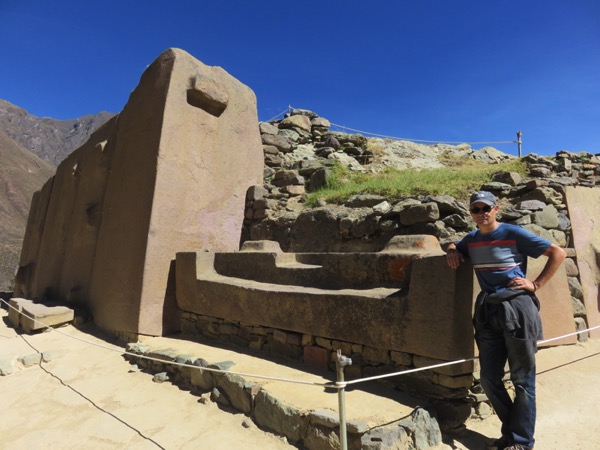
We can’t believe the Incans carved these huge granite blocks to connect to each other with such precision.
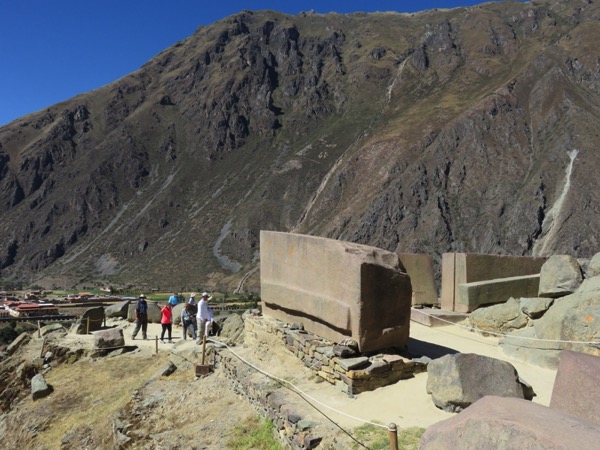
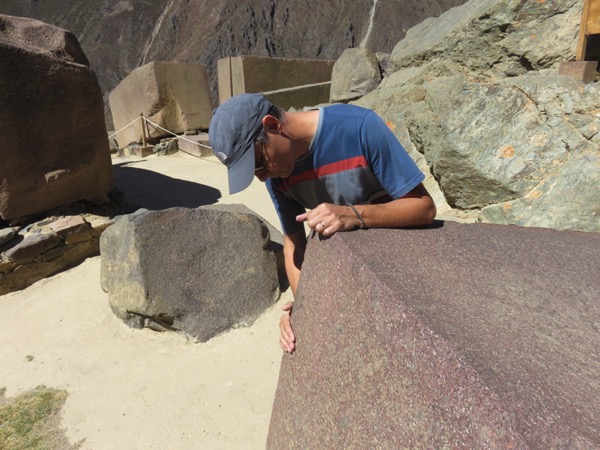
How did they get these smooth corners?
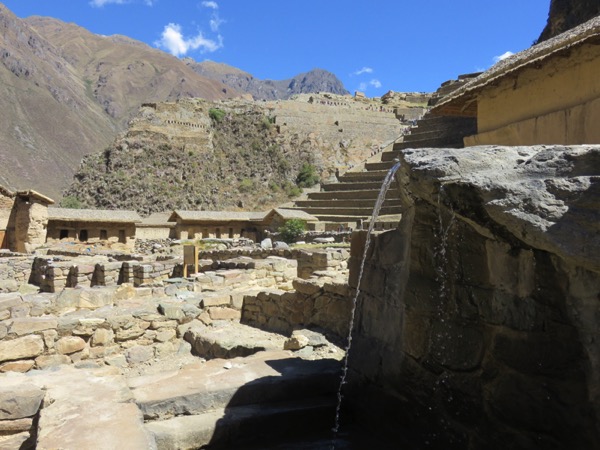
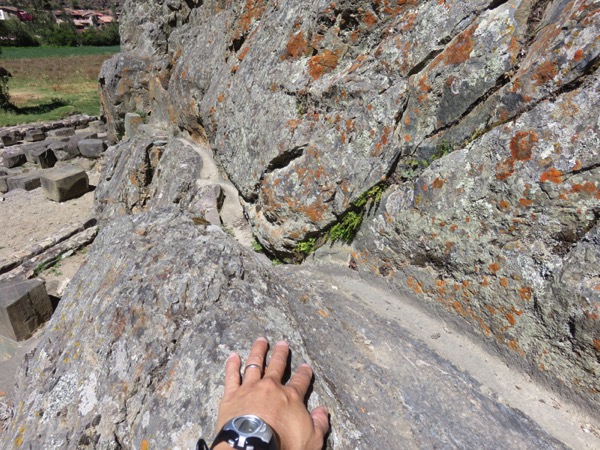
They carved irrigation channels right into the steep hillsides.
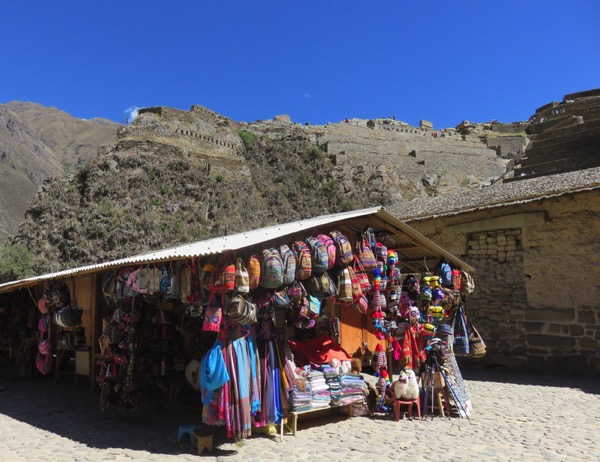
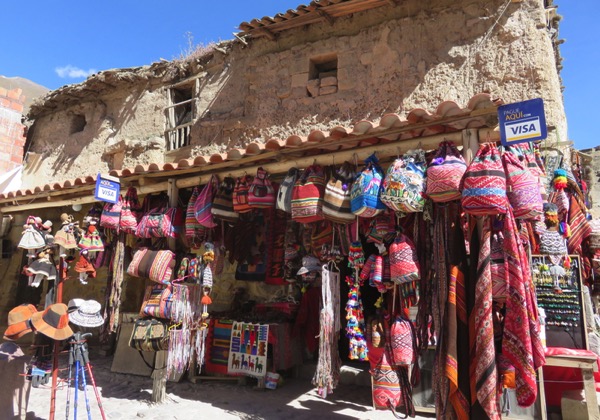

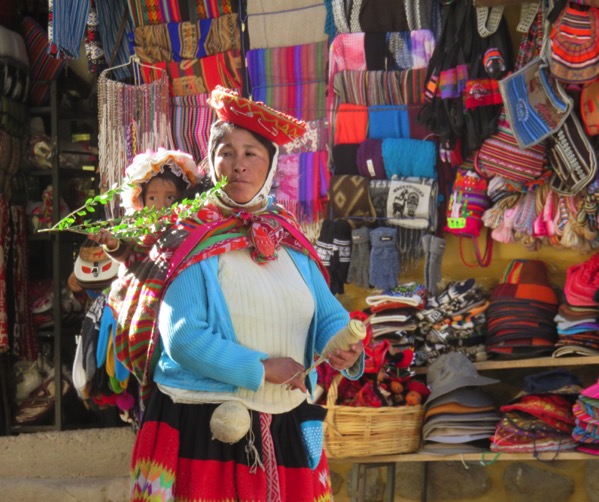
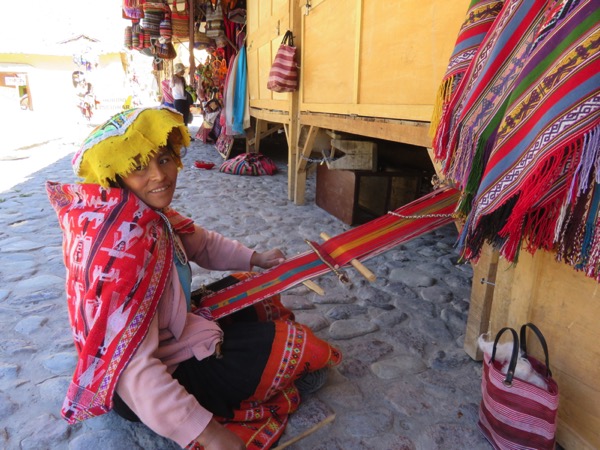
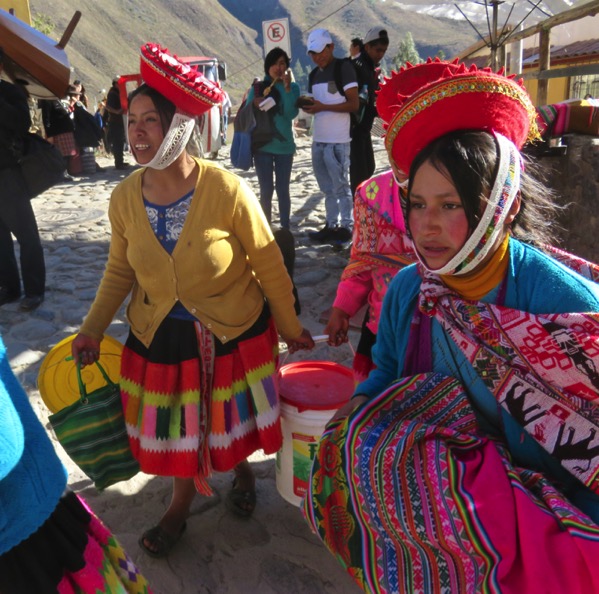
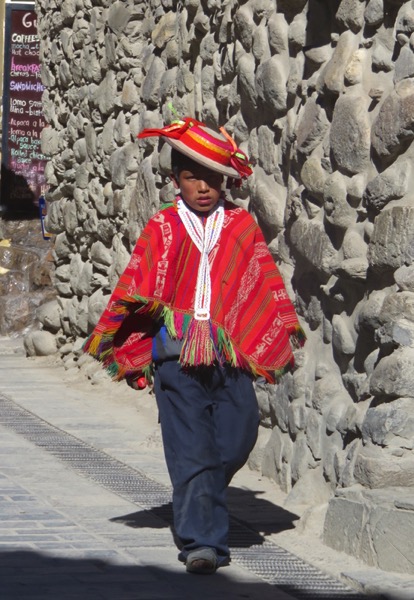
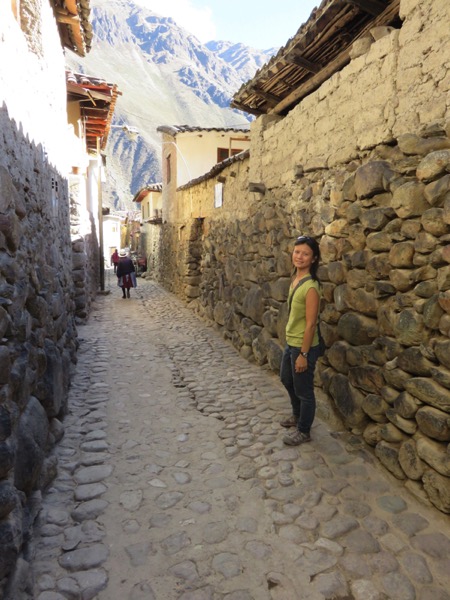
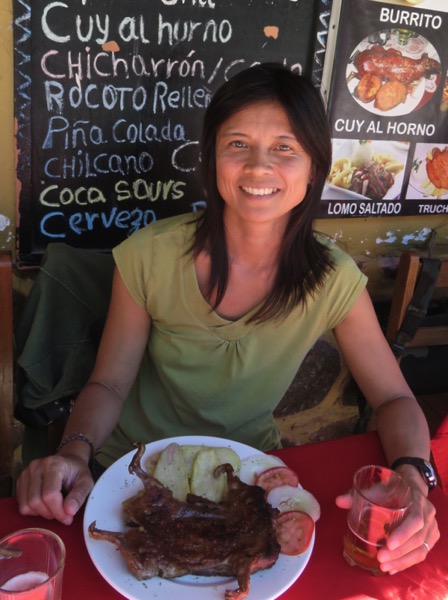
I ate guinea pig for the first (and last) time!
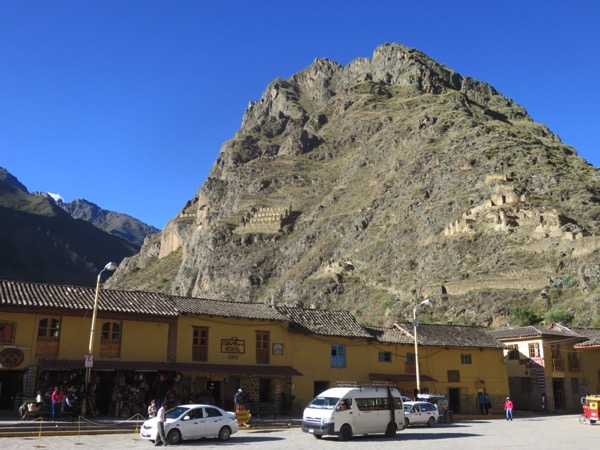
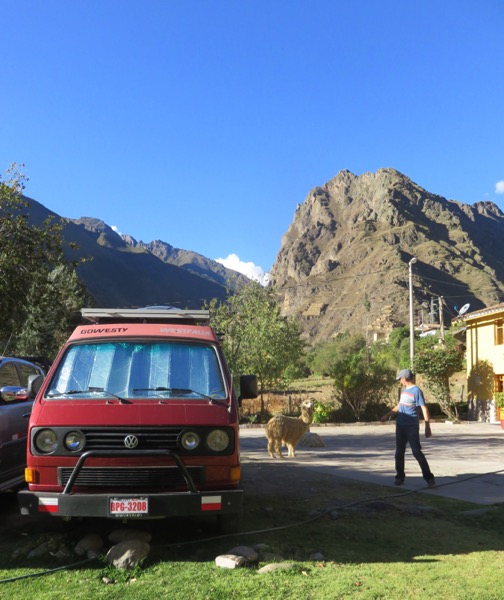
The van, a llama, and ruins in the distance. Life is good.
Machu Picchu
The crown jewel of the Sacred Valley is the Incan citadel of Machu Picchu. I’m saving our Machu Picchu story for another blog post, but here’s a photo as a teaser:
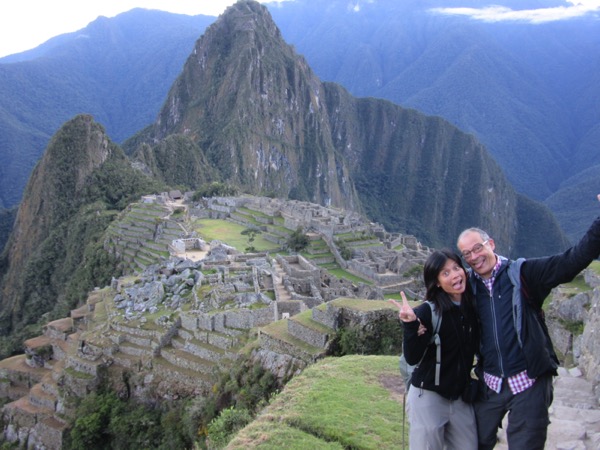
Tourist or Traveller?
There are times on this journey when Gregor and feel like Tourists instead of Travellers. Our definition of a Tourist is similar to a “Vacationer” – a person who comes to a country for a couple of weeks to explore the sites, cuisine, and culture, but doesn’t tend to engage with the local people on any more than a commercial level. A Traveller tends to be more interactive with the locals and shares the same experiences and challenges as the native population as they explore their surroundings.
For example:
– The Traveller feels the anxiety of driving through rush-hour traffic with hundreds of other latinos, while the Tourist sits comfortably in a hired passenger van.
– The Traveller has to go to 10 little shops to buy groceries for several meals because there are no supermarkets. The Tourist only needs to peruse through a few outdoor menus before sitting down at a restaurant for dinner.
– The Traveller makes an effort to immerse themselves in the local culture, while the Tourist is happy to observe from a distance.
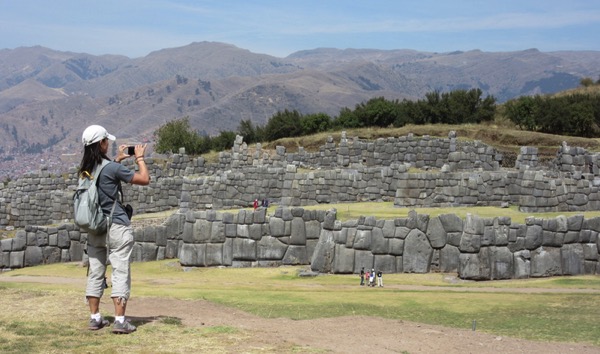
For us, the long-standing tourist infrastructure in Cusco and the Sacred Valley made it very easy for us (maybe even forced us?) to experience the region as Tourists. The large economic disparity between foreign visitors and Peruvian locals has created a competitive tourist industry, so we often felt like walking dollar bills. But we were okay with that because were knew that many people feed their families by selling artesenal textiles, crafts, tours, food, accommodation, and transportation to foreigners like us.
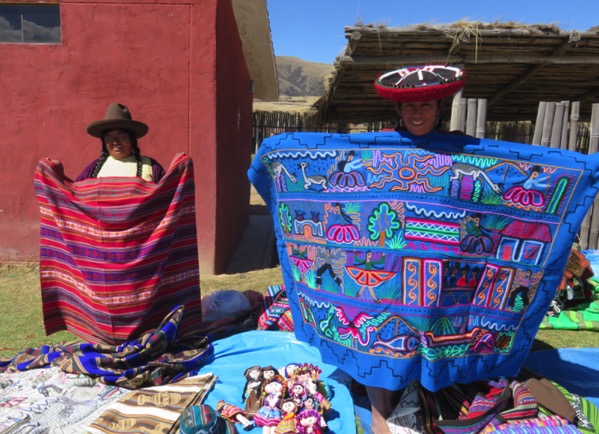
Our interactions with the Peruvians here were not nearly as rich as, say, our experiences with buying parts for Lucky in Ecuador. Still, we were content to be passive observers in this part of the world.
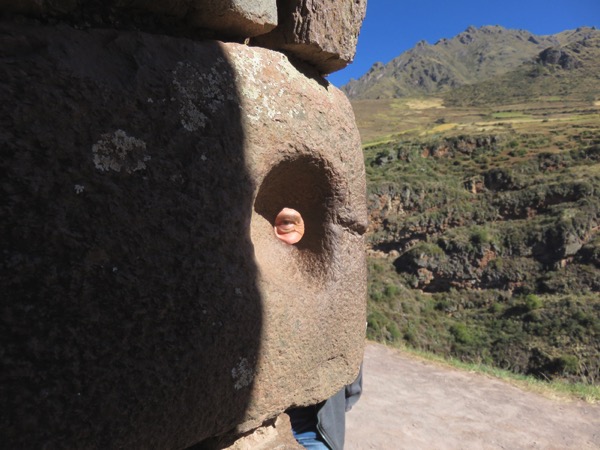
Maybe if we didn’t buy that Tourist Ticket, we wouldn’t have rushed around the Sacred Valley and would have experienced the region in a more meaningful way. Or maybe if Lucky wasn’t working so smoothly at the time, we would have connected with the local people under different circumstances and we’d have way more interesting stories to tell.
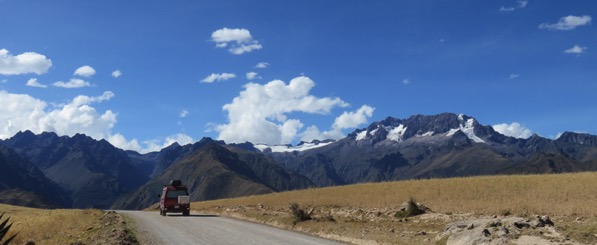
All that said, the Sacred Valley has some of the most gorgeous landscapes we’ve seen so far and contains more cultural, historical, and archeological sites than we’ve ever seen in such a compact area. In our humble opinion, it’s a great place to visit for a two-week vacation 🙂

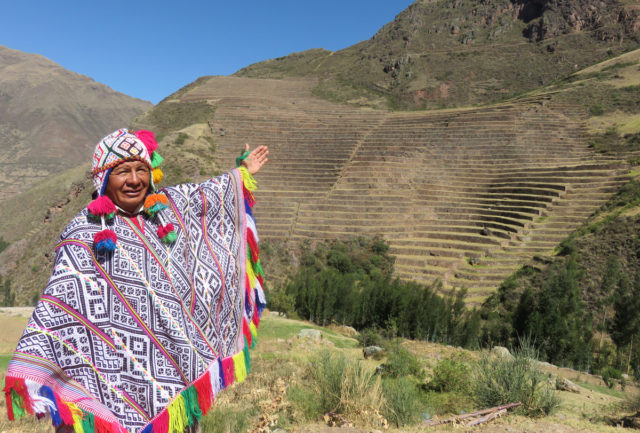
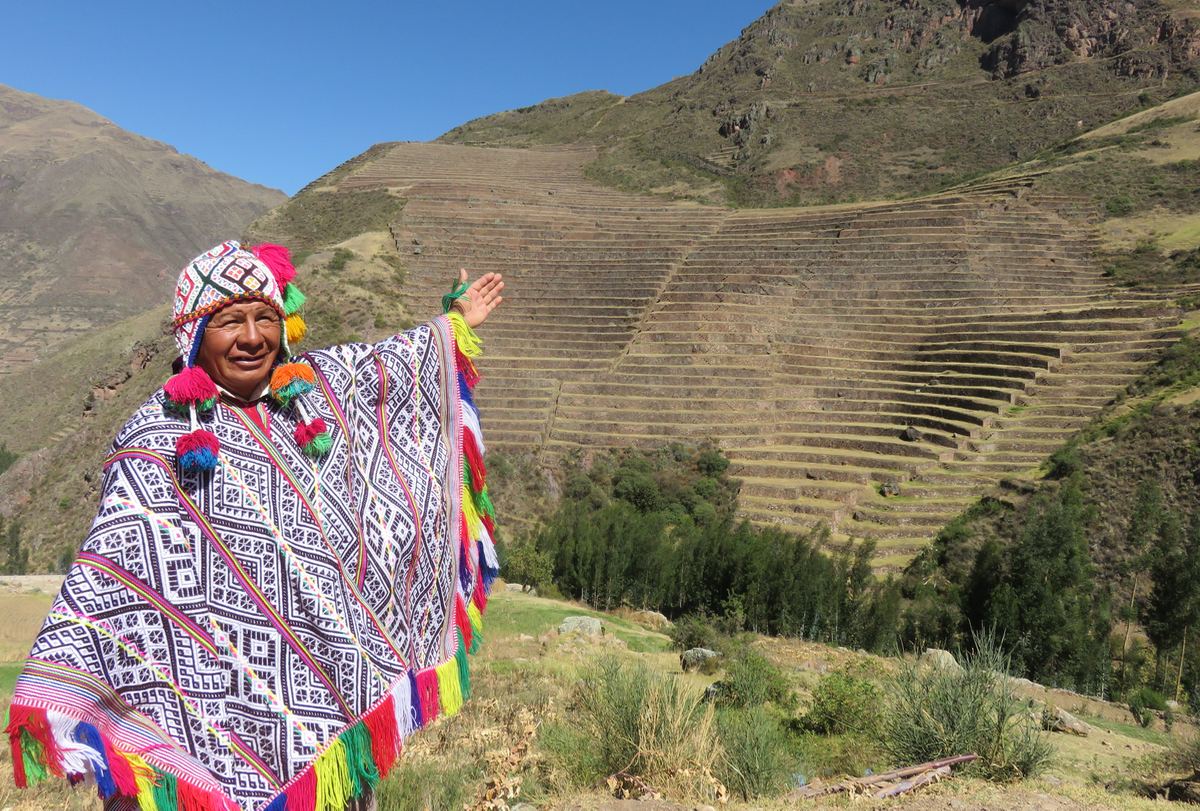
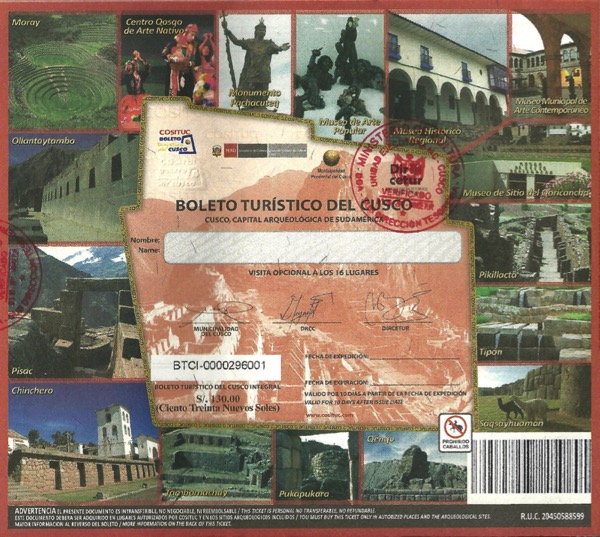
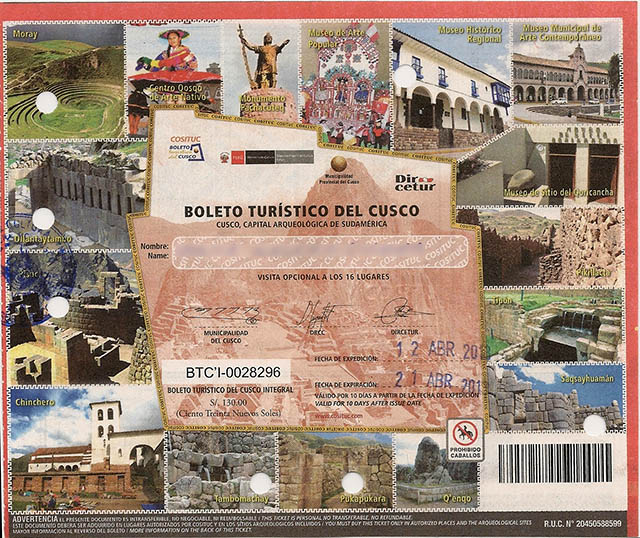
yep. hunting for a cleanish shower and hunting for an onion that wasn’t rotten at 10 different stalls in Uyuni was an experience for sure. great post!! miss you guys.
Love Peru. Love Cusco. Your photos take me back!
Ha ha, I’m sure us overlanders have a lot of the same photos 🙂 But I definitely don’t think I’ll have any farm photos like you guys have 🙂 So nice to see that you’re continuing to live the dream!
Peru is on my bucket list!!!!!! Thanks for sharing your pics and experiences!!!!!
Wow, it looks like you share the same items on our bucket list! The Sacred Valley a wonderful place.
Awesome photos! Thank you for the update, it is still a country on our list of must visit.
The ruins and historical sites are well worth it, but the hiking and trekking opportunities are really good as well (we didn’t do that due to lack of time). Hope to one day see your photos of the valley 🙂
Lovely! Brought back many memories of my own explorations there back in 1997…
And brought back memories of my time there in 1975 (no, that is not a typo). No tourist infrastructure then! In the small towns the locals came out to gawk at us – blonde haired and red-headed children. Many of the elders would stroke my red hair for good luck.
Love your blog!
Wow, I wish we could have visited at a time when there were no tourists (but I was 2 years old back then!). It’s still a really special place. Thanks for reading 🙂
How was the tourist infrastructure back then? I often wonder what it would have been like to see these places before all the backpackers and tour buses came along.